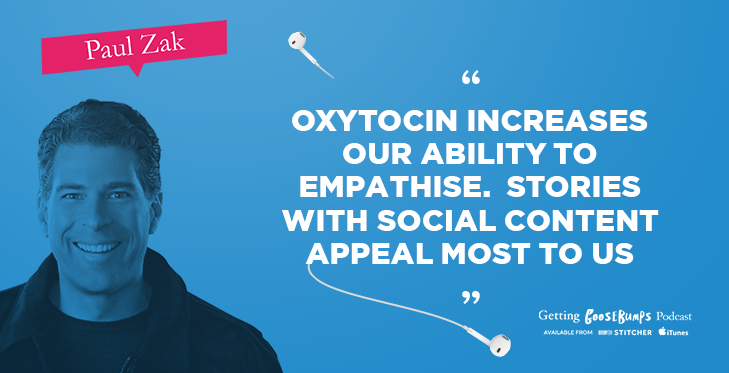#38 The Science Behind Empathy with Paul Zak
 This week on Getting Goosebumps: The Power of Storytelling, Neuroeconomist Paul Zak covers the science behind human empathy, revealing why business stories are often more effective than simply giving audiences the facts.
This week on Getting Goosebumps: The Power of Storytelling, Neuroeconomist Paul Zak covers the science behind human empathy, revealing why business stories are often more effective than simply giving audiences the facts.
In Paul’s compelling TedX talk, he uncovered how the hormone oxytocin has the potential to promote trust. Founder of ZESTxLabs, they work assessing attentional and emotional engagement, measuring what motivates people into action after seeing ads. When it comes to effective stories, Paul knows exactly what makes people tick.
Why story? Why not facts?
Paul delves into the importance of storytelling. Although facts can give us the answers, stories help us to persuade. Paul shares that he believes every social interaction involves a degree of persuasion.
Stories are able to sustain attention that your brain doesn’t want to give out unless it really has to. To put it bluntly, the brain is actually pretty lazy!
The science behind empathy
Oxytocin increases our ability to feel what other people are feeling. It increases the amazing human ability to empathise. This is an essential ingreident for any successful story.
Humans respond to social content
We’re social creatures. Stories that have social content are attractive to us. We want to know what other human are doing and hear it in a compelling way. That’s where stories come in to hold our attention.
Memory and emotion
Paul advises that from a storytelling perspective, you need an emotional tag so that you care about what is going on in a story, and you naturally repeat it to other people.
Check out the next episode of Getting Goosebumps, "Making Your Audience the Hero" with CEO and Co-Founder of non-profit organization New Story Brett Hagler
